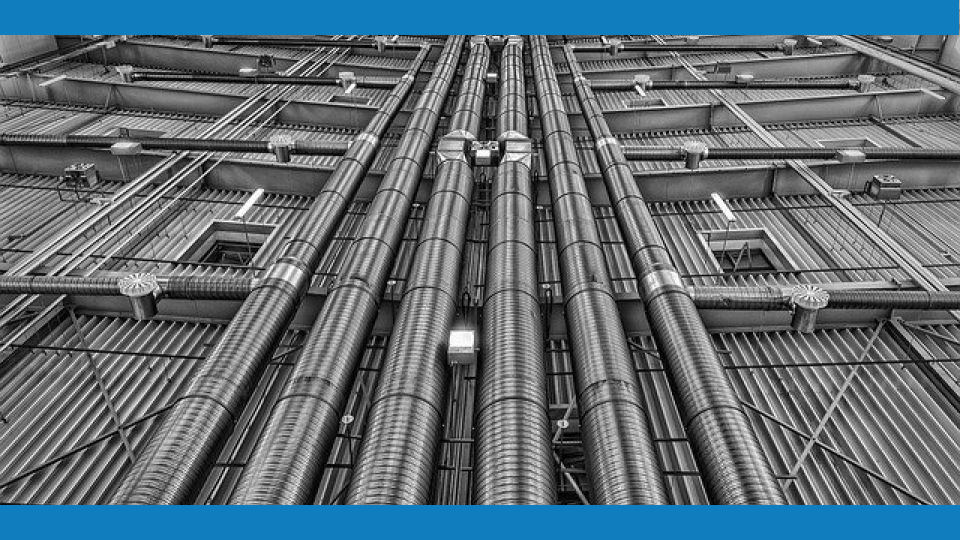It’s essential to have well-functioning heating, ventilation and air-conditioning (HVAC) systems for the general welfare of building users. However, operating these systems is usually very expensive, frequently representing a building’s largest energy consumer. There are usually always many opportunities to reduce consumption. Read this HVAC opportunities checklist to help you improve overall energy performance for your HVAC systems.
Existing operation and maintenance practices may mean that HVAC energy consumption and costs are up to 30% higher than necessary.
Follow the HVAC opportunities checklist below to help reduce energy consumption and achieve the ‘Win Win’:
Typically, we look at HVAC systems after we’ve looked at lighting, process equipment and other heat generating systems – as any changes or recommendations directly impact on HVAC system load and performance.
It is important to think holistically about all the HVAC systems used for the building, and how they work together, as part of the review. They are all part of the overall system to deliver thermal comfort for the building users.
There are many different types of systems in use. The HVAC opportunities checklist below is therefore illustrative and general. Measures will depend on types of systems installed. Ventilation systems may include constant air volume, variable air volume or other ventilation types, and may include heating and comfort cooling as well as mechanical ventilation. Otherwise, heating and cooling could be supplied by independent systems. Combined heat and power (cogeneration) systems may also be used to supply centralized heating or cooling. There may also be a sophisticate level of control of the total system provided by a building management system.
As well as reducing demand and improving operation and maintenance practices, there could then also be significant potential in upgrading systems and controls, or installing smaller equipment.
Particularly target significant energy users: systems, assets, plant or equipment that account for substantial energy consumption and/or offer considerable potential for energy performance improvement. Stay safe when inspecting non-stationary or operating plant. Involve a specialist if in doubt.
These 35 HVAC opportunities have been divided up across the Big Green Challenge 5-R categories. These are aligned with the good practice order of measures, focusing on measures first that are not only low cost but also right size subsequent investments in new HVAC technology. Look for this symbol ($$$) to get an idea of the level of investment that may be required.
REVIEW
The first step to take to improve understanding of HVAC performance and target savings straight away
1. Measure & review internal air quality and temperatures
- Walk the internal spaces, talk to building users and ask for their feedback. Consider organization policies, industry good practice and operating requirements for the HVAC systems, etc.
- Look at local control settings and temperature dead-bands – systems should be controlled to higher temperatures in summer and lower temperatures in winter.
- Domestic hot water temperatures should be high enough to minimize risks (e.g. over 55°C to protect against Legionella infections), but not too hot. Involve service partners to help identify any performance issues and discuss opportunities.
- Particularly, target areas that are either too hot or too cold, or areas where windows are often left open when AC or heating systems are running.
2. Use a Building Logbook
- A logbook is a useful document to orientate people around the system and to manage performance improvements. It typically includes equipment details, operation & maintenance history, current levels of condition, and reviews of energy performance.
- Understand how the different HVAC systems work together – log/update any change in HVAC strategy, operating policies, metering and descriptions of operations (“Desops”).
- Inspect the plant installed; note age and examine condition and levels of maintenance undertaken in recent years.

3. Establish current levels of HVAC energy performance
- Review energy consumption data from main site meters and sub-meters for each main item of HVAC plant or groups of plant; compare current consumptions against previous consumption baselines.
- Target areas of high energy usage. Use sub-meters to cover gaps in data for areas which are likely to be significant energy users.
- Consider HVAC system’s overall energy performance by reviewing energy consumption against service outputs and compare performance to other similar local buildings/operations or benchmarks.
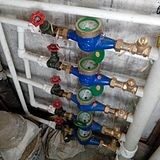
4. Comply with national building regulations and international standards
- Conduct research to see whether the HVAC system complies with national legal requirements.
- Look for opportunities to implement operational policies, objectives and targets that are consistent with international best practice standards.
5. Measure efficiencies of significant energy users
- Energy efficiency is a measure of the relationship between energy output and energy input.
- This can often be inferred by measuring losses associated with the plant under consideration, e.g. for boilers using flue gas analysis and temperature measurements.
- Often simple adjustments and regular maintenance can easily improve efficiency levels.
6. Ensure systems are not oversized or undersized
- Look at individual significant HVAC assets and at how they perform at peak load, low load, and part-load scenarios.
- Consider whether they are under energy effective control at the different levels of load.
- Particularly, target areas where building users are using additional heaters or AC unit to overcome comfort issues.
- Consider whether any upgrades or remedial measures would improve the performance of any oversized or undersized asset.
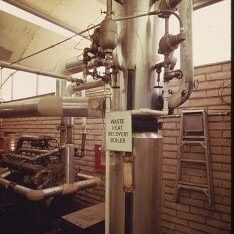
7. Review existing maintenance contracts
- Consider whether the specification for maintenance contracts is still appropriate and that service partners are delivering what is required.
- Consider opportunities for improvement, for example through training or making provisions for more proactive value-based maintenance rather than solely reactive and preventative routines.
REDUCE
Target improvement measures that directly decrease HVAC energy consumption first
1. Consolidate operational activities
- Group operational activities, HVAC systems and controls into common activity zones.
- Create unoccupied spaces, and ensure they are not being air-conditioned when empty.
- Reduce volume of centrally stored domestic hot water if it is not required.
2. Reduce solar gain
- Depending on window placement and orientation, buildings may suffer from high levels of solar gain at certain times of year, which can be uncomfortable for building users and can significantly increase HVAC energy consumption.
- To reduce solar gain, consider using solar films or coatings for windows.
- If there's an opportunity, look for ways to reduce the total area of glazing, without compromising daylighting, and consider options to upgrade to solar control glazing.
- Otherwise, use window blinds, external (or mid windowpane) louvres or shading.
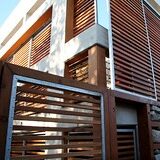
3. Maximize use of natural ventilation
- Check natural ventilation window systems are operable and any possible cross ventilation paths are not being blocked (including through wall partition grills if necessary).
- Use night cooling to pre-cool any thermal mass in the building to minimize AC loads.
- For mixed mode systems, ensure AC systems are switched off when natural ventilation is being used.
4. Challenge HVAC operation times:
- Continually review and trial reducing the main system operating time schedules (for boilers, chillers, fans, pumps, etc.) as much as possible whilst still meeting business requirements.
- Ensure systems are switched off during the seasons they are not needed for.
- Consider use of automatic controls to help reduce operating hours of the main systems, for example by using optimum start/stop controls for heating and cooling systems.
- Continuously look to improve all control settings and their commissioning set-ups.
- Ensure any frost protection set points are appropriate.
5. Turn down temperature set points
- Look at activity zone temperature settings for thermostats, air-handling unit (AHU) control sensors, and local thermostatic radiator valves (TRVs).
- Ensure there are dead bands between heating and cooling modes; particularly target any spaces where there’s a risk that separate HVAC systems might be heating and cooling at the same time.
- Look at relaxing humidification and dehumidification controls where humidity levels aren’t critical; these can often by very energy hungry processes.
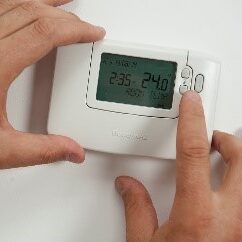
6. Appoint a ‘key-connector’ champion
- Empower a local champion to coordinate and connect feedback from building users with HVAC performance improvement activities being undertaken.
- Use local communications to make sure building users understand the operation of the systems and the benefits of good operational practices; for example, using windows and blinds to reduce air-conditioning loads, keeping windows and doors closed when heating and AC systems are switched on, and agreeing and maintaining thermostats at optimum levels.
7. Use decentralized systems ($$)
- In the right circumstances, decentralization can be an energy effective strategy to reduce distribution system losses for local heating, domestic hot water, ventilation or AC systems.
- For example, decentralization can be effective: for systems with different operating times or requirements, or where remote system parts need extensive distribution infrastructure if connected to a central system.
- Use local extract ventilation systems (LEVs) for remote emissions producing processes; for example, for cooking, paint spraying, welding, etc. 24/7 server rooms often use separate local AC systems. Weigh up benefits of decentralized LEVs compared to a centralized systems with effective variable air volume controls.
- Large sites with many different applications and loads may benefit from a change to a decentralization strategy.
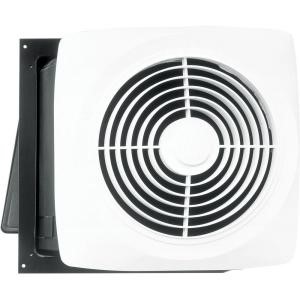
REUSE
Once loads have been reduced, prioritize routine and maintenance improvement practices (that don’t require significant investment)
1. Raise awareness and make use of staff training
- Empower colleagues who best understand local requirements to contribute to optimizing the operation and control of local HVAC systems.
- Raise awareness so local users understand the impacts of their activities. For instance, the risks of any obstructions that might impair thermostats or local heating and AC emitters. Ensure other heat sources aren’t having averse effects on local systems.
- Involve local champions in checking and challenging the area’s basic control settings: ensure timeclocks are reset after clock changes, automatic controls are not unintentionally left in manual mode (in ‘hand’), and that settings are not set-back to very safe levels.
- Check that system operators, service partners and contractors are all adequately trained, and can carry out energy performance reviews and proactive maintenance activities as required; they should be competent, have the relevant qualifications and have received adequate safety training to deal with any risks.
2. Carry out regular maintenance practices
- For all significant HVAC energy users, check latest supplier requirements for system maintenance. Carry out maintenance, cleaning, and filter changes for the AHUs.
- Ensure all terminals units, diffusers, and grills are clean and free from obstructions.
- System cleaning is often a good opportunity to measure and check airflow rates, and check for good regulation and balancing for distribution systems.
- For chillers, don’t forget both compressors and condensers; inspect annual refrigerant gas inspection reports.
- Regularly fine-tune combustion controls and boiler firing schedules, and check operability of controls, particularly for system valves, actuators and dampers.
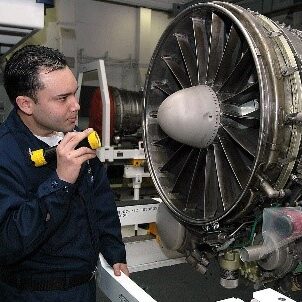
3. Routinely check for any asset degradation
- Look for obvious (unintentional) air leakage draughts within conditioned spaces. Look for and eliminate leaks within air and water distribution systems.
- Check existing draught seals and catches for draughts around windows, doors and any other penetrations through walls.
- Use good external covers for wall AC units and fans when not in use.
- Draught reproofing is often one of the most cost effective ways of reducing building fabric losses.
- Check that there are good levels of thermal insulation on distribution pipework and duct work when it passes through untreated or external areas.
4. Consider distribution system remedial measures ($)
- Target oversized systems and challenge the way air and water flow rates are controlled within distribution systems; look for opportunities to reduce system flow rates. For example, make use of variable speed drives (VSDs) on fans and pump, while still meeting occupancy and statutory requirements.
- Look for opportunities to reduce losses from heating/cooling distribution system temperatures and how system distribution temperatures may be automatically adjusted during periods of lower load; for example, using heating system compensation controls.
5. Consider central HVAC plant remedial measures ($$)
- Target central plant with poor efficiencies.
- Consider introducing VSDs on oversized fan and pump motors to modulate motor speeds.
- Consider installing buffer tanks to reduce chiller cycling to improve system performance; minimum system capacity depends on the chiller machine capacity, the permissible number of starts per hour and the flow water temperature differential.
- Organizations have found benefits from using chiller measures such as liquid pressure amplification (LPA) and adiabatic cooling systems. Make sure remedial measures effectively work by involving users in the retrofitting process; to be effective, controls need to be simple, user friendly, and properly understood and owned by the building operators.
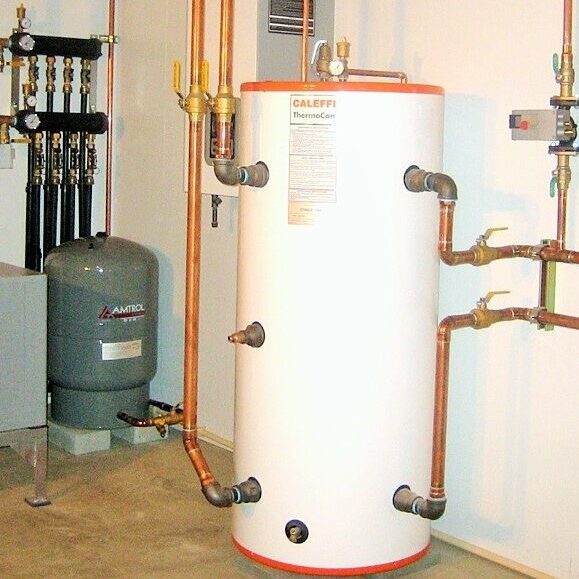
6. Continually recommission the HVAC systems & controls
- Regularly review, challenge and optimize the control settings for the significant systems.
- Look for opportunities to challenge distribution system temperature and/or pressure control set-points to improve controllability and energy performance.
- For steam systems, optimize feed-water and blowdown processes, as they can be extremely wasteful of energy and water.
- Rationalize sequence and load control of significant HVAC energy users (boilers, chillers, condensers, etc.) so they operate as efficiently as possible and aren’t cycling too frequently.
7. Upgrade the building management system (BMS) ($$)
- A BMS provides a sophisticated way to automatically monitor and control the operation of the building services and their energy performance.
- Significant energy savings are possible if the system works well in helping facilities and maintenance teams to monitor and target opportunities; system upgrades may be needed to ensure systems are up to date and working effectively.
- A building owner should be prepared to invest in BSM support to ensure systems are maintained and proactively used.
- Simple user-led controls are often more effective than complex control systems that are left to fend for themselves.

RECYCLE
Talk to colleagues, share experiences, and try out proven HVAC approaches and technologies used by others
1. Collect feedback from building users and act on opportunities
- It is natural for maintenance activities to end up being solely reactive, responding to a few regular complainers.
- By surveying the general population of users, it is possible to gain a better understanding of the consensus of how well the systems are performing to better target and prioritize opportunities for improvement.
- Ensure space control sensors are positioned to adequately represent user requirements; it is often better to locate temperature and air-quality sensors within the space at the same height as occupants as possible, rather than in extract ducts.

2. Research ideas and actions used by others
- Discuss opportunities within external industry networks and forums.
- Organize presentations from suppliers to understand the latest functions and attributes of the systems you have, and find about the latest good industry practices and opportunities.
- Procure replacement parts consciously by considering the lifetime impact of energy consumption and costs.
- Consider changing to greener alternatives, for example using ‘natural’ refrigerants to minimize the risk to global warming.
3. Use natural cooling whenever possible
- For recirculation ventilation systems, optimize the use of outside air for free cooling using economy or enthalpy controls.
- Night cooling, using outside air can sometimes be used to pre-cool a building effectively to reduce air-conditioning loads.
- Many chiller systems can operate in free cooling mode, without additional refrigeration to enhance system efficiency, either using cooler outside air or a cooler local water source.

4. Reinsulate with enhanced insulation and air-tightness measures ($$)
- Check current levels of insulation, for example using or a thermal camera (thermography) survey to identify areas of poor insulation, draughts and air leakage paths.
- Replace or add in additional insulation where it is defective or missing; always ensure there is adequate ventilation levels and protection against any risk of condensation.
- Upgrade windows and doors, with improved levels of insulation, if appropriate.
- Ensure AC spaces are thermally separate from non-conditioned spaces; consider the use of reflective foil behind radiators to reduce heat losses.
- Air pressure testing can be used to check overall levels of building air tightness. Smoke pencils can identify local air leakage paths.
5. Recirculate unused hot air ($)
- Many warehouses and high spaces are heated through air systems, so most of the hot air ends on the ceiling – consider using de-stratifying fans or air jet circulation systems to recirculate the heat back down to the comfort zone to reduce overall heating requirements.
- Minimize the heat loss through warehouse doors by using draught proofing, curtains, or by making deliver entrance doors smaller.
- Look for local air pre-heating opportunities, for example using supply air coming through warm atria or roof spaces, or waste heat from air-cooled condensers (e.g. from computer rooms).
6. Recover HVAC system waste heat ($$)
- Use heat recover from exhaust air, for example using economy or enthalpy control for recirculation air systems or heat exchangers, run-around-coils (RACs) or thermal wheels within extract ventilation ducts.
- Check performance of any existing heat recovery systems and continually recommission and fine tune controls as necessary.
- Consider investment in new heat recovery systems.
7. Refurbish intake air plenums for modern low loss filters ($)
- Consider retrofitting existing air filter systems with modern high efficiency low loss versions.
- Significant reductions can be achieved by derating or controlling the fan motors to match demand requirements for air-flow.
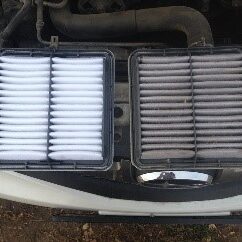
RETHINK
Challenge your mindsets, look for new ways of doing business, trial new ideas and invest in more energy effective and sustainable HVAC solutions; review business cases and their ROI
1. Rethink and innovate new ways of doing business ($$)
- Review the existing HVAC energy services and understand how much value they add (or don’t add) to your customers.
- Focus on the HVAC energy services that add value to customer service, and design out those services that don’t.
- Brainstorm new ways of doing business that would reduce the energy consumption, and optimize building form to cater for such business practices.
- Look for better means of creating comfort levels; for example, radiant heating could be a more effective replacement for warm air systems in buildings with high ceilings or large air-change rate requirements like in factories.

2. Reinvent infrastructure using efficient fabric and lean design approaches ($$$)
- Engage a design team for a building refurbishment program.
- Look to upgrade the fabric to best practice insulation standards.
- Design for natural ventilation, or mixed mode with high efficiency plant, where possible. Look for opportunities for passive solar design.
- Energy performance simulations can target the most cost effective opportunities for improved insulation and better energy performance. One of the highest standards for the building fabric is the ‘Passivhaus’ standard, which can result in very low heating and cooling demands.
3. Upgrade to more efficient clean HVAC systems ($$$)
- Upgrading central plant can often achieve 5 to 25% reduction in overall consumption, depending on the efficiencies of the existing plant. Consider converting constant volume ventilation systems to variable air volume where on-demand control makes sense.
- Upgrade motors to premium efficiency (IE3) or even super premium efficiency (IE4) motors. Use large ducts and pipes to minimize distribution energy consumption.
- Consider replacement larger fans (with limited capacity control) with modular plug fans. Use EC (electronic commutation) DC motors for fan-coil units.
- Look for opportunities to use more sustainable or environmentally friendly fuels and refrigerants, and low or zero local emissions heating and cooling systems.
- If using combustion boilers, only consider condensing type boilers that recover heat from the flue gasses. Absorption chillers can be run from waste heat from district heating systems.
4. Use local heat or renewable green energy sources ($$$)
- Look for opportunities to recover and recycle locally generated waste heat and power if it exists.
- Consider combined heat and power (CHP) systems where loads are suitable – CHP sizing needs to be carefully considered as part of any feasibility review.
- If proposing biomass CHP, or heating systems, review the local availability and sustainable supply of the appropriate renewable fuel sources; also consider the impact of local air emissions from the combustion processes.
- If proposing electrical heat pumps and local renewable electricity generators, consider the potential on-costs of any upgrades required to local electrical distribution systems.
- Look at opportunities to integrate solar thermal or photovoltaic into building roofing systems.

5. Join-up HVAC strategies with best practice FM & maintenance
- Designs are often based on maximum requirements, but facilities management (FM) operational strategies need to optimize energy consumption with changing demand. At design stage, we need to forecast more likely occupancy numbers and profiles and co-create operational energy management strategies that fit with best FM and maintenance practices.
- Look to use on-demand HVAC control philosophies wherever possible so HVAC systems (ideally) only reactively operate in response to the demand. Presence detectors and/or air quality sensors – coupled with inverter drives on fans – can be used to control ventilation systems.
- Develop sequence and load control strategies for heating and chiller systems, using staged plant with high efficiencies, and using natural free cooling whenever possible.

6. Set operational principles to save energy
- Early on in the development process, set an energy effective vision including policies, strategies, metrics and targets designed to drive constant improvement.
- Based on regular occupant feedback and BMS checks, design the energy-optimization strategies to ensure the benefits of the design intent and to drive continual optimization and improvement are realized in use.
- Synthesize these strategies into a set of key principles, useful to significant energy users, who can then implement better operational practices and behaviors.
7. Report how low you can go
- As part of any redesign process, forecast operational energy consumption; (include low and high), and most probable energy consumption levels.
- Involve operations and facilitates colleagues in the process to ensure forecasts are more realistic.
- Develop consumption models that will also help review new saving opportunities and drive continual improvement of operational practices and behaviors going forward.
SUMMARY
There are usually always many opportunities to reduce energy consumption within HVAC systems.
We find that following the 5-R categories helps ensure the remedial measures are considered in an order that are not only ensure lowest overall cost but that also right sizes subsequent investments in new HVAC technology.
Download
If you would like the downloadable summary checklist for this, please contact us.
- It’s in Microsoft Word, but it can easily be converted to another Word processer, such as Google Docs. It’s read-only, so you’ll have to save your version onto your own drive to be able to modify it.
- You can then modify and develop this simplified checklist to suit your needs as required. Complete it on line or print it out (but remember: think before you print!)
For more detail about optimizing HVAC performance more generally, check out CIBSE's top tips: Temperature in Indoor Workplaces (Thermal Comfort) and Ventilation in Buildings
Written by Monica Landoni and James Brittain

